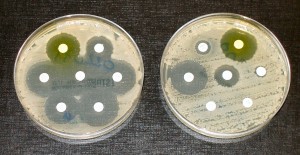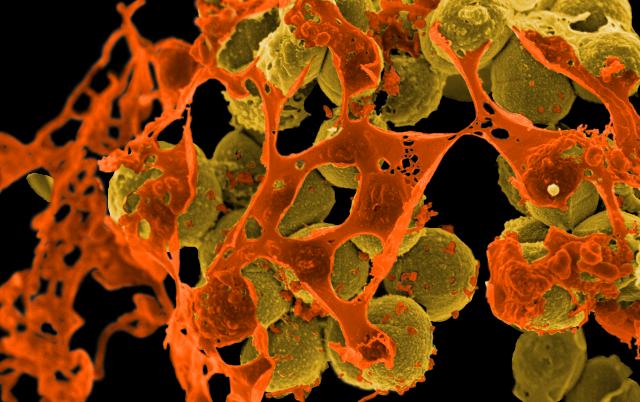If you have ever taken antibiotics, you have also taken part in perhaps the largest unplanned experiment in medical history. It began nearly a hundred years ago, with their discovery. In the past half century, humans have used them profligately—popping antibiotic pills at the hint of illness, feeding them to farm animals, and flushing them into the environment with abandon. This experiment of sorts has proceeded without design or careful records, and with little sense of what consequences might result.
In recent decades, however, one outcome has become terrifyingly clear; our incessant use of antibiotics has bred bacteria immune to them altogether. As bacteria are exposed to antibiotics, most are wiped out, but a few lucky cells hold genes that confer resistance. When exposed to antibiotics, these fluky microbes have a tremendous advantage compared to their susceptible bacterial peers. Their descendants quickly come to dominate the population, and soon the entire strain becomes resistant.

This process and its unsettling consequences are the subject of Resistance, a new documentary directed by Michael Graziano. The film recounts humanity’s love affair with antibiotics, medicines which have enabled the near total defeat of bacterial disease—at least in developed nations. But our reckless use of these “miracle drugs” threatens to return us to the days when every infection could be deadly. Antibiotics have been overprescribed and taken for granted, the film argues. Every unnecessary use—for instance, antibiotics taken to treat a viral cold, which remains unaffected—speeds bacteria toward resistance. As resistance becomes widespread, once potent drugs become ineffective, and we march toward a world without antibiotics.
Resistance is surprisingly engaging, without descending into fear mongering. The film takes pains to convey the severity and urgency of the problem, but its treatment is level-headed. Graziano clearly recognizes the subtleties that have made antibiotic resistance a thorny issue, and the film’s scientific explanations are laudably cogent and clear.
Graziano also deserves great credit for tackling an issue which can seem distant and dull. The film is littered with strikingly beautiful microscopy, which provides a watchable counterweight to hospital room shots and interviews with academics. Resistance also makes good use of archival footage to situate the problem of antibiotic resistance historically. Flitting between these clips and images of futuristic laboratories conveys a sense that gains against bacterial infection are precarious. A world of resistance and medical backslide is an ever-present possibility.
Interviews with scientists and policy-makers drive the film, but it is the interviews with everyday people ravaged by drug-resistant infections that convey its relevance. The message of these heart-wrenching stories is unmistakable: Bacteria will only become more resistant, and, unless we change our ways, no one is safe.
While Resistance offers glimpses at new, sustainable approaches to antibiotics, the focus of the film is on problems, not solutions. And it leaves the viewer with little doubt that we are facing a serious problem. This alone is remarkable. Resistance marshals stark facts and pairs them with lucid, accessible scientific explanations, leaving even skeptics convinced. It should be a model for scientific filmmaking.
Rating: 3.5/4

